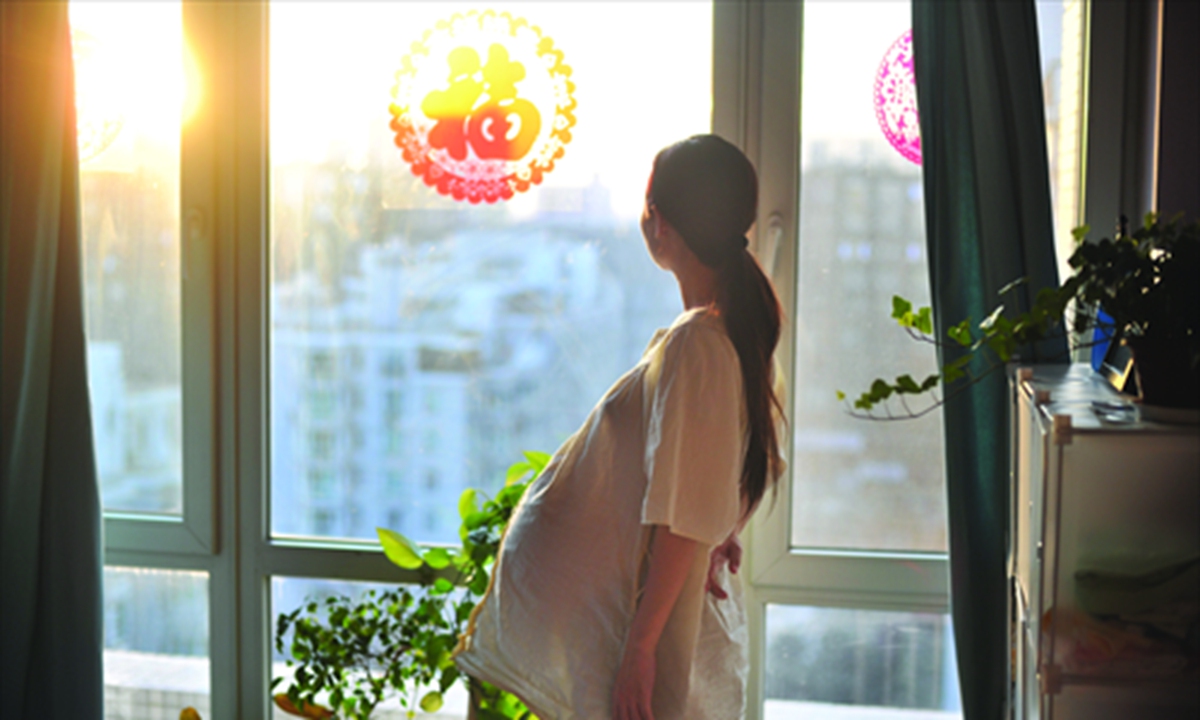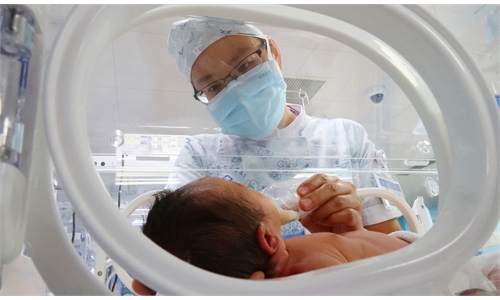
Pregnant women and their partners at a childbirth class. Photos: CFP and IC
As the two sessions approach, political advisors are considering more supporting measures to support childbearing women.
China's population decreased by 2.08 million people in 2023 to 1.40967 billion, according to data released by the National Bureau of Statistics (NBS) on January 17. In 2023, 9.02 million babies were born, resulting in a birth rate of 6.39 per thousand people. Meanwhile, 11.1 million people died in 2023, equal to a death rate of 7.87 per thousand people, the data showed.
He Dan, director of the China Population and Development Research Center, and a national political advisor, suggested a mechanism for new-born caring subsidy, which will serve to encourage family members to take care of children in the family.
Establishing a subsidy mechanism for infant and toddler care effectively reduces the pressure of parenting in families. Also, it is a way for individuals to acquire work skills. This lays the foundation for them to engage in the parenting service industry, benefiting the full and efficient utilization of labor resources, He pointed out in an article published in the CPPCC Daily.
Policy supports related to fertility have covered issues related to marriage, fertility, child-rearing and education and have been warmly welcomed by the public. But there is still a certain gap compared to the needs of the people, He said, pointing out several challenges that lie ahead and needed to be addressed.
The fertility support policies have not been fully implemented, He said, adding that the universal childcare service system is not yet sound, the new demands for reproductive health services are not fully met and early childhood development in rural areas faces challenges such as children in difficult circumstances and left-behind children.
A positive fertility policy covers three aspects - the fertility supporting policy which should address the main factors that affect fertility, the basic fertility guarantee system which covers basic insurance and child-care subsidy as well as the marriage supporting system, He said.
The political advisor added that in a society with low fertility levels, relatively proactive public financial policies need to be adopted, while using a combination of legal, institutional and policy means to promote the formation of a mechanism where families, employers and government departments share the responsibility for fertility.
One main reason behind the negative population growth is the decline in the number of women choosing to have children. According to National Health Commission, intention of women of childbearing age to have children continues to decline, with the average number of children intended by women of childbearing age falling from 1.73 in 2019 and 1.64 in 2021.
Though the long-term population decline trend has already become an established fact, Chinese demographers believe there are still some positive factors in China's demographic situation.
Li Yue, a demographer from the China Population and Development Research Center, told the Global Times in an earlier interview that according to census data of 2020, the lifetime fertility level of women of childbearing age in China is 1.6. The fertility within marriage is high and the proportion of lifetime childlessness is low, meaning a high fertility potential.
In 2024, the negative population growth may be alleviated to some extent due to Chinese people's preference toward the Year of the Dragon and a birth rebound after the three-year COVID-19 pandemic, Yuan Xin, deputy head of the China Population Association and a demographer from Nankai University in Tianjin told the Global Times.




